Tuesday, August 12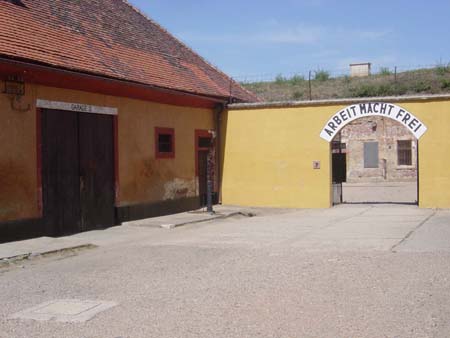
Steve: Today we spent a very moving day at Terezin, the site of a ghetto and prison that was created by Nazi Germany in 1940. Terezin was unique because it was created as a self-contained Jewish "town" that the Nazis used for three purposes simultaneously - to transit Jews to extermination camps in the East (primarily Auschwitz), to kill Jews (30,000 died here), and to serve as a propaganda tool for the Nazis. The Germans forced all Czechs to leave Terezin by 1942, and created a "town behind bars." Jews lived here under crowded and unsanitary conditions, believing that they would someday be able to return to their homes. They were allowed to form a government (that had no real power), to write and perform plays and music, and to educate their children. In reality, most of the population living in this "town" was there temporarily, and their destiny was to be transported east for execution.
Terezin is also known as the site where the Nazis were able to fool the Red
Cross. Coming under intense international pressure to prove that Jews were
being held under good conditions, the Nazis agreed to host the Red Cross at
Terezin. In preparation for this visit, the Nazis undertook a major beautification
program that the Red Cross totally fell for. When the Red Cross arrived, the
Nazis had staged sporting and theater events, created fake shopping areas,
renamed street signs, and had cleaned up everything (of course the Jews had
done all the actual work to pull this off, not knowing anything about the
Red Cross visit). The visit had been totally orchestrated down to the exact
minute, building by building. The Red Cross didn't even bother to visit the
prison located 1 km away where prisoners were being tortured and executed.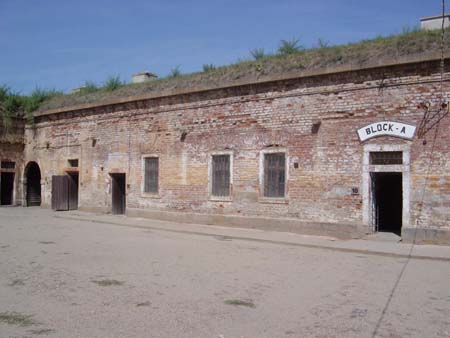
Our visit also included a walking tour of the Mala Pevnost, the Small Fortress. The Mala Pevnost appears today as it did in the 1940's - all the buildings are original. It was first built as a fortress, but after the occupation of Czechoslovakia by the Nazis, it was turned into a police prison. Jews and political enemies of the Nazis were held here in terrible conditions, and were randomly tortured and murdered. The experience of walking into the actual cells where the prisoners were held was chilling. In one mass cell, we were told that over 100 hundred Jews were held in a space that originally was built to hold two horses (when the prison was a fortress).
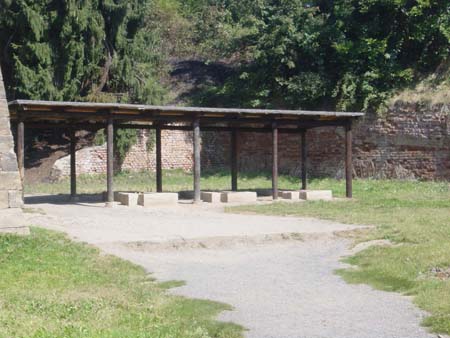
We also walked through the "gate of death" leading to an execution wall where prisoners were systematically shot, sometimes made to run along the wall so that the guards could use them for target practice. The execution range is pictured here on the right. It was very tough to see and think about what happened here.
We were particularly moved by the exhibits in the Ghetto Museum in the town
of Terezin. There is a large display of the actual artwork created by the
children of Terezin, each piece labeled with the name of the child and the
date/location of their death (most were less than 15 years old, and were killed
at Auschwitz). The museum also houses a huge collection of artifacts from
the ghetto and a recreation of the barracks illustrating the terribly crowded
and unsanitary living conditions.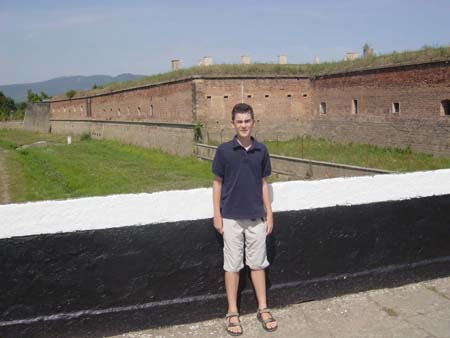
As we walked through the run-down streets of Terezin, we tried to imagine
what it was like to live in this artificially-created "town." It
is deceivingly large. It contained a central square like all towns in Europe
that we've seen (the Jews were not allowed in the square - there were strict
rules on where they could go). It contained schools where children were taught.
There were theaters. There were medical facilities. All this… and in
reality created primarily for the purpose of transporting Jews to their deaths.
No matter how hard we tried, I don't think we were able to really picture
what this place was like in 1941-1945. I'm finding myself continually trying
to develop a mental image and to put myself in the minds of the Jews who lived
in Terezin - I'm just not sure it's possible to do.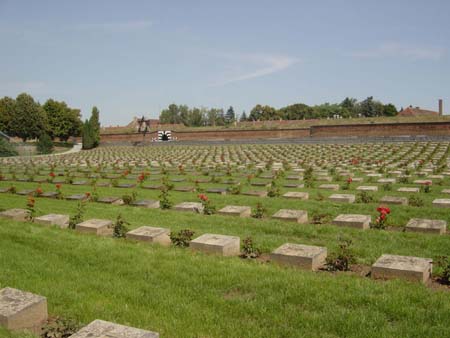
Our experience today was both moving, and educational. We hadn't been aware of the Terezin story, and it's very different from what we saw at Dachau. We never even knew that these types of concentration camps had been created. David and Katie both were fully immersed and thoughtful during today's experience, and we feel very good about what they've learned and now understand about the horrors of the holocaust.
Distance Walked: 2.68 miles (pedometer is working again)
Katie's Komments - the topic for today is…. Communism in the Czech Republic
The theory of Communism originated with the writings of Karl Marx and Lenin in the mid-1800's. Through these theories many societies tried to create a happy and equal way of life for their people. The Communism theory specified that everything would be owned and controlled by the government. In addition it required everyone to get the same income regardless of their type of job or working hours. Communism tried to establish what the government believed to be a classless society. There are many mixed feelings about this theory, and while in the Czech Republic we have heard many opinions on the times of the Communist regime in what was then known as Czechoslovakia.
Under the Communist government everyone in theory would receive an adequate and similar income for their work. The Communists felt this would help people who had low skilled labor jobs get the same opportunities and rights as people who had high skilled labor jobs. They felt this would promote a more peaceful and equal community. In addition under Communism the prices of food and supplies were lower. This is because all of the prices were set by the government at a low rate-this was possible because the people producing the food were paid a small salary. We also heard that during the Communist rule there was less crime and drug abuse. Some people felt this made them safer. While Communism did establish a classless society, unfortunately, it didn't always end up being a peaceful one.
A major problem with Communism was that the government took many opportunities
and rights away from the people. Another problem with Communism is that the
government used military force to control the people. This involved much violence
which completely defeated the original purpose of Communism. In Czechoslovakia
this violence included the beating of many innocent students which caused
the uprising of the people against the Communist government. They revolted
against their violent government with passion but in a peaceful manner. This
smooth and peaceful protest later earned its name as the Velvet Revolution.
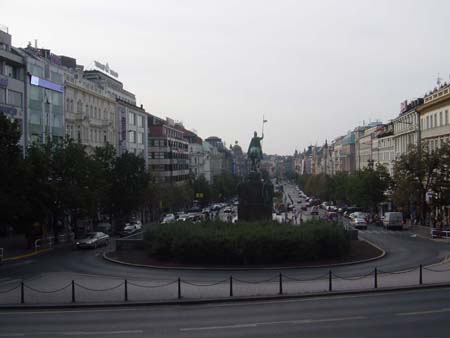
As you can see, Communism is a very different type of society compared to
capitalism in the US. I am really glad I didn't have to live during this period
of time in the Czech Republic. The more I read about this government the more
I value choice in the US today. Without this quality in my home country I
wouldn't be able to accomplish some of my future dreams of being a painter
or public speaker. Walking through Prague you just can't imagine such a thing
like Communism taking place in this peaceful, touristy, and very commercial
city. When you walk through the astounding old town square with its incredible
buildings and activity, you just can't imagine mammoth tanks ramming through
all the beauty not too long ago. One of the most amazing sights is the view
of the enormous National Museum from a distance, the same view from which
you can see in pictures of the Velvet Revolution. In these pictures there
is not a bit of cobblestone showing-only passionate people. It's amazing to
compare the pictures! I think it is fascinating that the people revolting
against the government solved violence by using peace. Despite their anger
and passion they solved the problem without force.
